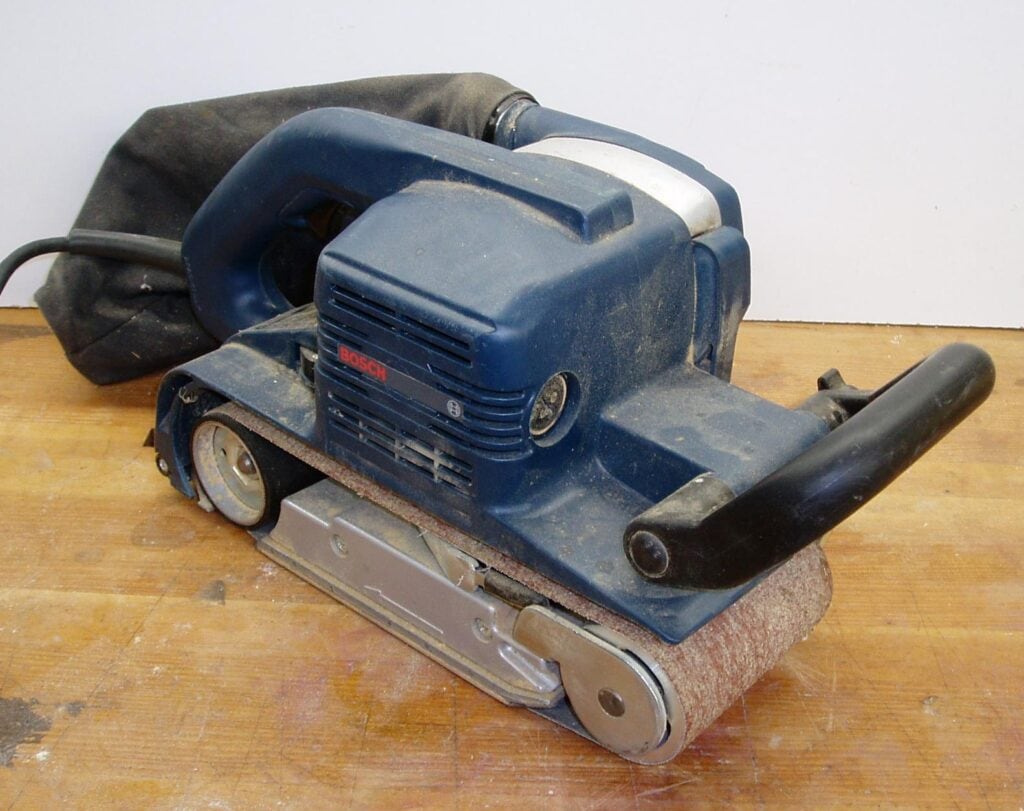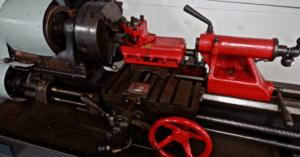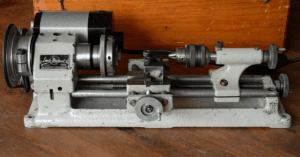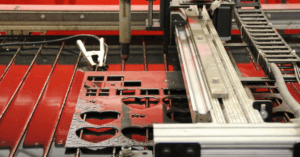
If you want to sand wooden furniture, you know it can be difficult to smoothen the surface manually. Using a power sander can help you finish the task more efficiently, so we’ll show you the different types of tools for the task.
The best type of sander for furniture depends on several factors. These include your intended purpose, wooden material, and furniture type. So while a belt sander is great for all-around furniture use, others might prefer the detail sander when dealing with small wooden pieces.
You also have to consider the features of the sander to ensure it meets your needs. This article will thoroughly cover the different types of sanders for furniture and their uses. We’ll also cover the importance of using wood sanders below.
Do I Need a Wood Sander for Furniture?
If you’re considering a wood sander for your furniture project, you likely need one. This versatile tool can save time and effort compared to manual hand sanding. It also offers a smoother and more polished surface.
A power sander is suitable for two different applications—building furniture from scratch and refinishing old wooden pieces. Below, we’ll explain how this tool can benefit these two types of projects.
Building Furniture From Scratch
A power sander helps you build and shape wooden furniture from scratch. It comes in different types, speeds, and sizes to suit your project needs.
For instance, sanders with wide sanding pads enable you to polish cabinets, tables, and other large furniture pieces. Meanwhile, compact tools help you smooth end tables, chairs, and pieces with tight corners.
Regardless of the model you choose, expect the power sander to deliver your desired finish. And since a built-in motor powers it, it can cut the task of sanding in half. It gives you a smooth and polished wooden surface in no time.
Refinishing Weathered Wood Furniture
Sanding is an important step in the wood refinishing process. While you can do the task using regular sandpaper and sanding blocks, a power sander enables you to achieve this quickly.
A power sander can effectively remove the paint, varnish, and other old finishes on the wood furniture. It can also strip off rust and other stubborn surface irregularities.
Power sanders make old furniture look brand new again. They create a fresh and smooth surface so that you can apply a new finish on top of it.
What Are the Different Types of Sanders for Furniture?
Now that you know the importance of a power sander, you are probably considering buying one right away. However, you might be surprised by the different kinds of sanders you’ll come across on the market. Each one has unique features with pros and cons.
To guide you, we’ll explore the most common sanders for wooden furniture projects.
Belt Sander

This type of sander has a built-in motor that uses a sandpaper belt for polishing wood surfaces. A sanding plate keeps the belt in place to give you an even surface.
Belt sanders allow you to use a belt of varying grits. They can deliver a smooth finish when you use a higher sandpaper grit. These can prepare wooden furniture for staining or painting.
With a lower grit number, these sanders can quickly strip off paint, finishes, and rust from wooden furniture. They are also perfect for the early stages of the sanding process since they can remove material in no time.
Belt sanders work well on large furniture projects, such as cabinetry, desks, tables, and shelves.
But due to its large size, a belt sander cannot fit into small corners. It is also difficult to use on small furniture pieces. This type of sander might even be too powerful and rough for fine sanding.
Pros:
- A high-speed sander can polish materials quickly
- It comes with aggressive power for removing more material faster
- It is compatible with various sandpaper belt grits
- A versatile application
Cons:
- It might be too aggressive for delicate woodworking projects
- The large sanding belt is difficult to maneuver in small spaces and tiny corners
- It can leave a lot of sanding dust
Random Orbital Sander

As its name suggests, this type of sander moves sandpaper in a random orbital pattern. This irregular movement delivers a smooth and even finish without leaving swirl marks. It also allows you to sand with the grain or across the grain of the wood.
A random orbital sander has more or less the same speed and aggressiveness as a belt sander. It can remove a lot of material, which is perfect for shaping furniture from scratch.
However, it can also produce a finer finish than belt sanders. It is suitable for refinishing furniture and other projects requiring a smooth surface.
Random orbital sanders work with round sandpaper pads or discs of different grits. These usually measure 5 inches in diameter and can work on small surfaces.
There are a few downsides to these sanders, though. First, they tend to be more expensive. They also cannot reach corners due to the shape of the base. Finally, random orbital sanders can take a long time to remove paint, primer, and other wood finishes because of the irregular sanding pattern.
That said, they are still among the most versatile sanders to use for wooden furniture projects.
Pros:
- It produces a smooth, fine finish
- The random sanding movement reduces the risk of swirl patterns and deep scratches
- It allows you to use the sander with or across the wood grain
- It is available in different speeds and sizes to meet specific project needs
Cons:
- Expensive
- It does not remove very abrasive material
- It cannot smooth corners or other tight spaces
Palm Sander
A palm sander, also known as an orbital sander and a ¼ sheet sander, is a handheld device that can polish wooden furniture.
It uses ¼ sandpaper, making it among the smallest power sanders. So unlike random orbital sanders, it can easily fit into tiny spots and tight corners. The compact and lightweight design is also easy to handle for long periods, ultimately reducing fatigue.
A palm sander moves in a fixed orbital pattern to remove finishes quickly. It also accepts various sandpaper grits to achieve different types of polishing.
Plus, palm sanders also tend to be cheaper than random orbital sanders. They don’t require special hook-and-loop pads, which can be expensive.
However, palm sanders still have their share of downsides. First, they can leave noticeable swirl patterns on the wood due to the fixed rotation. Their smaller motors also make them unsuitable for heavy-duty finish work. Finally, they are only compatible with small sandpaper sheets, which limit their use.
Overall, though, a palm sander is worth considering for its compact size and fine finish.
Pros:
- The handheld device is easy to maneuver
- Compact and lightweight design
- It removes finishes and small imperfections on wood
- The fixed orbital movement strips off material quickly
- Cheaper than other types of sanders
Cons:
- A small motor is unsuitable for heavy-duty finishes
- It can leave swirl marks on the wood
- Limited use due to the one-size sanding sheet
Detail Sander
A detail sander, also called a corner sander, is specifically designed for polishing tight corners, edges, and other hard-to-reach areas. It features a triangular base that accepts a similarly shaped sanding pad. Some models even use adjustable pads that enable you to sand wood at different angles.
The palm detail sander has a built-in motor vibrating at high-speed. It can smoothen corners and edges quickly. It is also ideal for fine finishing work and furniture refurbishing.
Plus, detail sanders are lightweight and easy to use. They are suitable for working on small projects for long periods.
However, the small sanding pad means the detail sander cannot polish heavy-duty, large furniture pieces. It is also more prone to breakage than other sanders due to its compact size.
That said, detail sanders are handy for those who often work with small furniture pieces.
Pros:
- Triangular base and sandpaper sheets are suitable for precise sanding
- Versatile sander can reach tight corners, crevices, and edges
- Lightweight and easy to use
- High-speed, built-in motor
Cons:
- Limited surface area coverage
- The compact design is more susceptible to breakage
What To Consider When Buying the Best Type of Sander for Furniture?
If you’re still unsure which furniture sander to buy, fret not. Below, we’ll teach you the essential factors to consider before finalizing your purchasing decision.
Sander Speed
The sander speed is important as it determines the material removal rate and sanding quality. A higher speed removes material quicker and leaves a coarse finish. In contrast, a slower sanding rate gives you smoother surfaces, but it takes time to remove all material.
To get the best of both worlds, look for a power sander with adjustable speed switches. These enable you to control the sanding speed from low to high. They also provide more flexibility as you can choose the pace that suits your furniture projects. For instance, turn the speed to the highest setting if you want to shape furniture. However, use the lowest speed option for wood refinishing.
Wood Type
Before buying a power sander, you must also consider the type of wood furniture you’re working on. Each wood species has a distinct hardness rating, requiring different sanding methods.
For instance, hardwood furniture pieces like oak and maple are difficult to sand. You’ll need a powerful sander with adjustable speed settings to achieve a polished surface.
However, you can use a light-duty sander if you have cedar or other softwood furniture.
Finally, look for a specialized sander if you own teak furniture or other wood with an unusual grain pattern. This power tool can deliver a smoother finish
Furniture Size
The furniture size is another important consideration when buying a power sander.
If you are sanding large furniture pieces like cabinets and tables, look for a larger sander with a wide sanding pad. Consider belt or random orbital sanders to achieve a smooth and polished surface more efficiently.
When sanding small areas, choose a small and compact sander. You can easily reach tight corners and edges with this model.
Power Source
Power sanders come in three different power sources—corded, cordless, and pneumatic.
Corded sanders include a power cable that connects to an electrical outlet. They can operate the motor as long as you want, considering that there is an electricity supply. However, they tend to be trip hazards. These types of sanders also limit your reach, depending on their cord length.
Meanwhile, cordless sanders give you greater mobility than corded sanders. They use rechargeable batteries and lack any power cords, hence the name. The only downside is the limited operating time.
Finally, pneumatic sanders use air pressure to run the motor. They offer greater and more consistent sanding ability. These make them perfect for heavy-duty finishes. However, they will require a separate air compressor, hose, and electrical outlet. All of these extra equipment pieces add to the operation cost.
Choosing between these three sander types depends on your needs, preferences, and budget.
Dust Collection System
One thing you must know about sanders is they produce a lot of dust. This can be difficult to clean after sanding your wooden furniture.
Consider buying a power sander with a built-in dust-catching bag. It automatically traps all the dust generated by the motor. Hence, this dust collection system eliminates the need to sweep up sanding dust. It ultimately saves time and effort.
Warranty
The last factor to consider before buying a power sander is the warranty. The longer the coverage period, the better. It indicates a high-quality item that will last for years to come. It also makes it easier to ask for a product refund or return.
Conclusion
Say goodbye to time-consuming and painful manual sanding when you use a power sander. It allows you to achieve smooth and polished wooden furniture pieces in no time.
Choosing the best type of furniture sander is relatively easy. Consider the type of wood, furniture size, and your preferred finish before purchasing one. Refer to our buying guide above for more tips.
Did this article help you find the best sander for your needs? Let us know by contacting us today!






